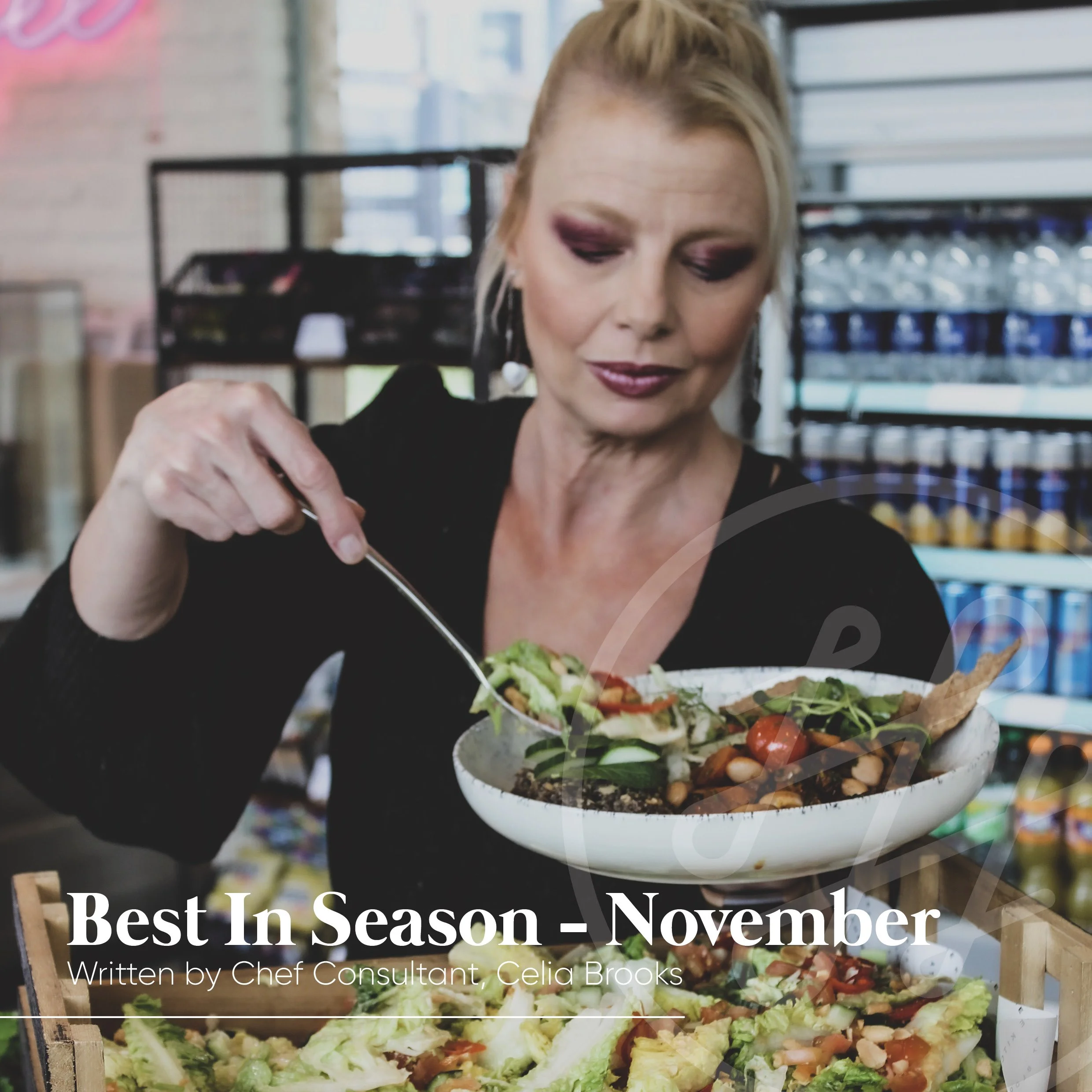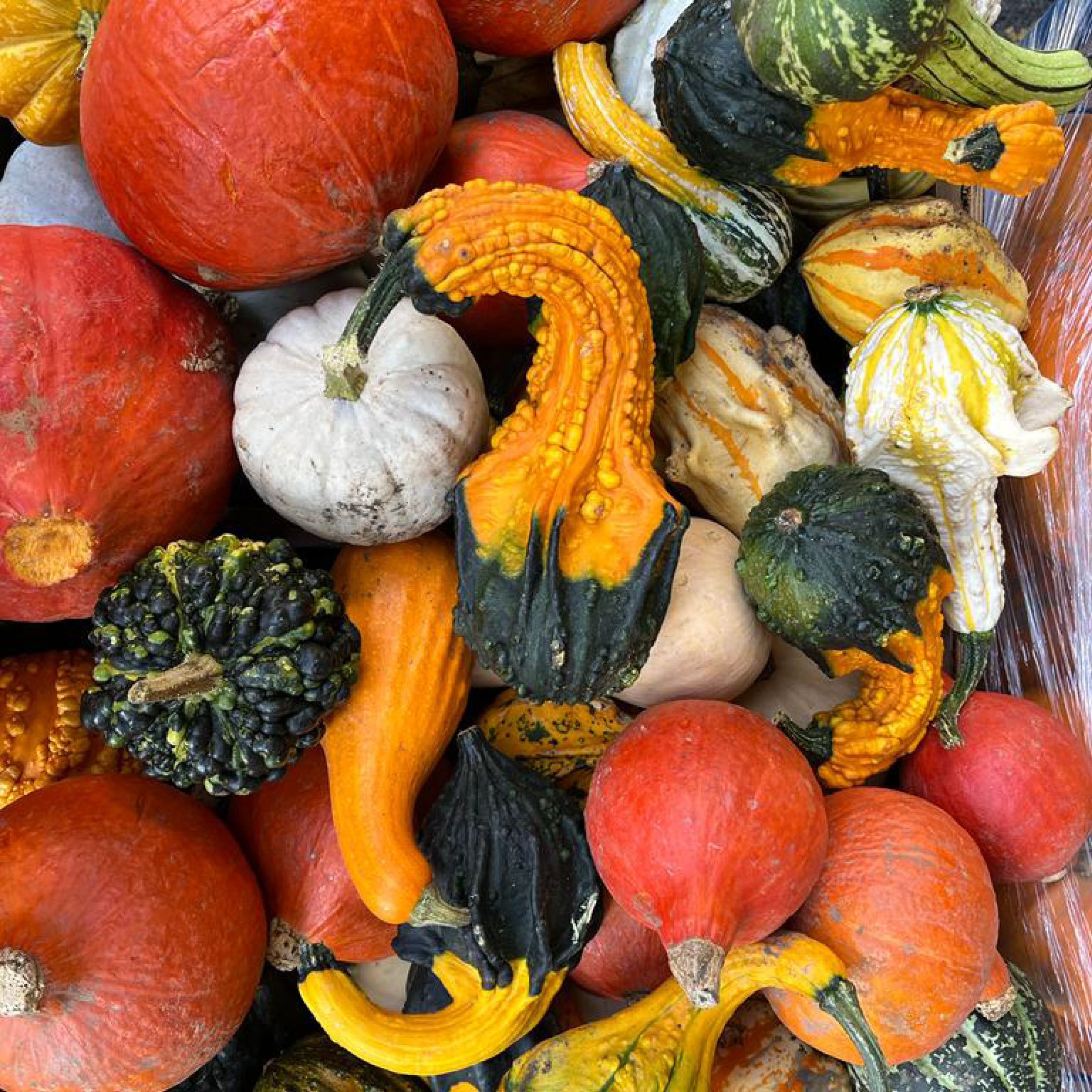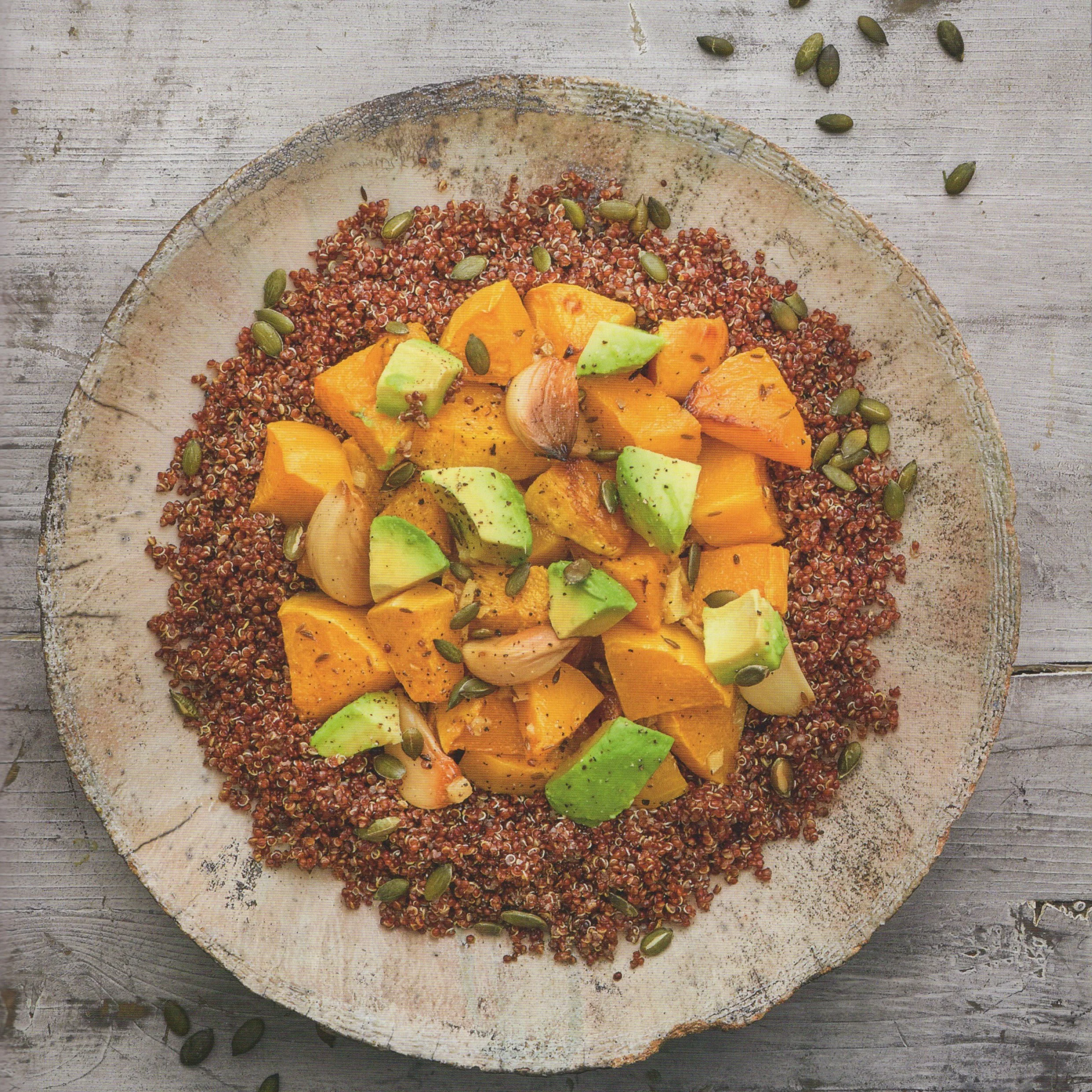Best In Season - November - written by Chef Consultant, Celia Brooks
Pumpkin Rules
So, listen up. There are two golden rules when it comes to pumpkins, and they’re a bit surprising:
1) If it’s orange on the outside, it’s probably NOT worth eating (with one notable exception - see below)
2) Cutting a pumpkin with a large knife is a NO-NO.
The Halloween tradition of carving pumpkins into jack-o-lanterns unleashes a flood of plump, round orange pumpkins gushing to market in October, but these mustn’t be mistaken for good eaters. These generic behemoths have a thin skin and spongy flesh which is easy to carve, but mostly contain tasteless watery cells suspended in stringy sinews. What you want out of a good eating pumpkin is flesh that is so dense that it is quite a task to even get your knife through it - and you must be very careful doing so - which is why a stiff, sharp, small to medium knife is safer because it gives you more control.
Most good eaters also have flesh the colour of a blinding sunset – blazing dark yellow or orange – never pale. The skin colour is no indication of the quality of the flesh, but it will help you identify the variety, which is helpful to know. The skin of some of the tastiest varieties are beige, muddy brown, silver grey or deep forest green, and it’s so rigid that you shouldn’t be able to pierce it with your thumbnail. The ubiquitous butternut squash is a good case in point – its drab ecru coloured skin is tough as an old boot, encasing a sweet bright orange flesh, which is delicious cooked. If in doubt, you can usually depend on good old butternut squash whenever pumpkin is required in a recipe.
Here are just a few of the best varieties to look out for - and probably not in major supermarkets. You’ll find them in smaller Asian and Mediterranean shops:
Kabocha: possibly the tastiest of all with a super creamy texture; a Japanese variety, small to medium size with a slightly flattened round shape and dark green mottled skin
Crown prince: large, smooth flattened round shape with subtle ridges and light silvery grey or pale green skin
Onion squash / Red kuri: dark orange skin (the exception to rule no. 1 above) and smallish, shaped like a giant onion
Acorn squash: dark green and orange mottled skin with deep ridges, smallish and shaped like a giant acorn or a round heart
A tasty bonus you get from fresh pumpkins is the seeds, which when roasted and salted, make an incredibly yummy and nutritious snack. Wash the seeds under cool running water and remove as many fleshy bits as possible. Allow the seeds to dry for a bit on paper towels. Toss them in a bowl with a little olive oil and fine salt, then spread out on a lined baking tray and toast in a 200C oven until golden and popping. The shells are crunchy and chewy and the toasted seeds inside taste like heaven.
Pumpkin, avocado & quinoa salad
From “SuperVeg” by Celia Brooks
Here’s a delicious main course salad of three complementary counterparts. It can be served warm or cold. Red or black quinoa looks particularly pretty with the colour scheme here, but white quinoa is fine too. See my note at the end on cooking quinoa – you may have been doing it wrong all along!
Serves 4 as a main / Prep 30 mins / Cook 30 mins, plus cooling time
Ingredients
For the pumpkin:
600g raw pumpkin, or winter squash such as butternut, peeled and cut into 2cm / 1 inch chunks (prepared weight)
6 cloves garlic, peeled, left whole
5cm / 2 inch piece fresh ginger, chopped
1 teaspoon cumin seeds
sea salt
2 tablespoons extra virgin olive oil
25g hulled pumpkin seeds
3 medium or 2 large perfectly ripe avocados
1 tablespoon fresh lime juice
250g cooked red or black quinoa, cooled (see tips on cooking quinoa, below)
Special equipment: non-stick foil or baking paper, one small and one large baking sheet
Method
1) Preheat the oven to 200C. Line the baking sheets.
2) Spread the pumpkin seeds out on the small baking sheet. Toast in the oven for 3-5 minutes, until golden and puffed. Leave to cool.
3) For the pumpkin, mix everything together thoroughly in a bowl and pour onto the sheet. Spread out in one layer, but keep everything nestled towards the centre of the baking sheet to help avoid burning the garlic and ginger. Roast for 30 minutes on the middle rack of the oven until soft, stirring once or twice during cooking and scooping everything back to the centre. (Cooking times may vary depending on the type of pumpkin used.) Once cooked, remove from the oven and let cool to room temperature or just warm.
3) Just before serving, cut the avocados into chunks and place in a bowl. Toss with the lime juice and a little sea salt.
4) Spread out the quinoa in a layer on a serving platter or individual plates. Top with the cooked pumpkin mixture, scraping everything from the baking sheet. Arrange the avocado on top, and scatter the toasted pumpkin seeds all over. Eat right away.
NOTE: Packaged pre-cooked quinoa is fine for this recipe. If cooking from dry, don’t fall for any recommendation to rinse the quinoa first or you will not get a light and fluffy result. The key is to toast the dry grains before cooking. First get your quantities right. The best ratio of cooking liquid to quinoa is 2:1, so measure the volume of quinoa in a measuring jug (say 100ml) and then be prepared to add twice that amount of stock or water (ie 200ml). Heat up a lidded pan over a moderate heat, without oil, and toss in the dry quinoa. Stir it around for just a couple of minutes until it pops and emits a bit of a toasty fragrance, then add the liquid. Stir, reduce the heat to a simmer, cover and cook until the liquid is absorbed, about 13 – 15 minutes, then fluff to perfection.




